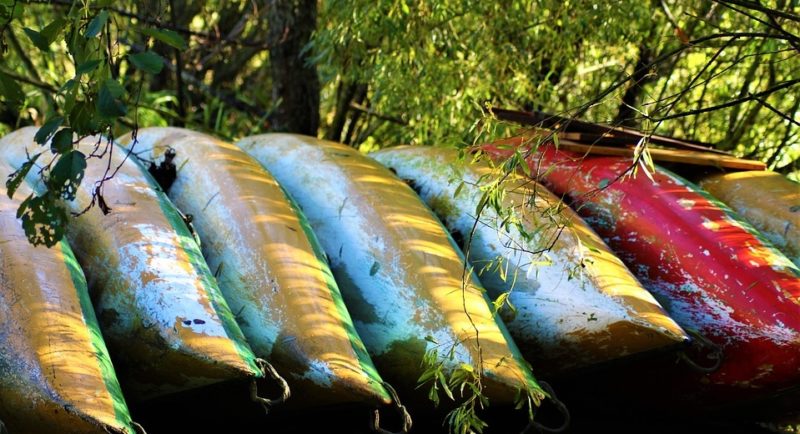
“Summer afternoon,” wrote Henry James, “to me those have always been the two most beautiful words in the English language.” And what better place to spend a few idyllic hours or days than along the shores of an inviting lake down a country road or across this vast continent. There is no shortage of irresistible options in the U.S.: here are just a handful that may inspire a family vacay.
Flathead Lake, Montana
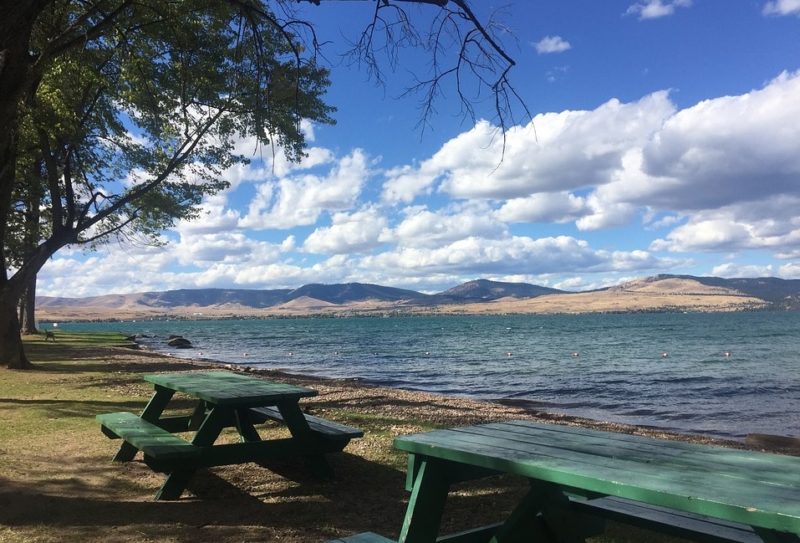
For generations, Montanans have made the annual trip to Flathead Lake for idyllic summer holidays—swimming, boating, and fishing on the largest natural freshwater lake west of the Mississippi. Ringed by mountains, with plenty of state parks, campgrounds, and summer cabins to make this a perfect family vacation spot, Flathead Lake is 28 miles long, up to 15 miles wide, and more than 350 feet deep. It is so large that it never seems busy— and large enough to support the rumored existence of a Loch Ness–style creature, the Flathead Monster.
If you neglected to bring your own boat, the 150-passenger The Shadow tour boat offers trips onto the lake from near Polson, along the way passing 2,160-acre Wild Horse Island, the lake’s largest, which is home to bighorn sheep, bald eagles, bears, deer, and—yes—wild horses.
The resort town of Bigfork, at the lake’s northeast corner, is a beautiful bayside community alive with art galleries, fine restaurants, and high-end. Bigfork offers a certain arty sophistication, most palpable when the professional Bigfork Summer Playhouse opens for a four-production season of comedies and musicals or the Festival of the Arts that takes places every year in early August.
Lake Champlain, Vermont
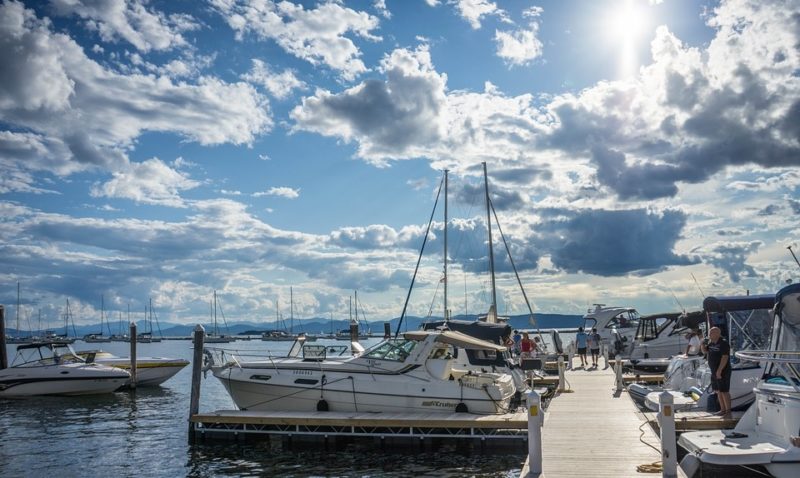
With its lively music and food scenes and splendid location on the shores of Lake Champlain, and backed by the majestic Adirondacks to the west, Burlington was first settled by independent-minded folks like Ethan Allen and his brother, Ira, of Green Mountain Boys fame. It rose to prominence as a major port after the opening of the Lake Champlain Canal in 1823 and by the late 1800s it had become a major timber port. Today it is known for its left-of-center politics, and famous for its battle to keep big box stores away. It is Vermont’s biggest city, which is to say, not very big—just 42,000 people.
Lake Champlain provides an endless source of recreation and fun. Sailors, swimmers, rowers, and paddlers all find their favorite spots on its many calm bays and beaches. The Community Sailing Center offers rentals, lessons, and access to a fleet of sailboats, dinghies, and other craft. Or take the easy way out and climb aboard The Northern Lights for a 90-minute narrated cruise that relates tales of the lake’s rich history, like its crucial role in the Revolutionary War. (The Champlain Islands, a picturesque archipelago that includes Isle LaMotte, are so far north they’re easier to reach by car.)
Windsurfers prize the lake for its gusty location, while bikers follow the paved Burlington Bike Path, 12 pictorial miles of converted rail bed along the shoreline, which connects with the larger Champlain Bikeway, a 363-mile route that circumnavigates the lake.
Lake Champlain is also the scenic backdrop for the four-block pedestrian Church Street Marketplace, a vibrant mix of entertainment, restaurants, and shops that includes Ben & Jerry’s, the uber-famous ice-cream company that got its start in Burlington in 1978. (The main factory in Waterbury, 27 miles from Burlington, is a point of pilgrimage for some.) Food fans also know not to miss Al’s French Frys, a venerated burger-and-fries experience amid red booths and black-and-white tiles, in nearby South Burlington.
Lake Coeur D’Alene, Idaho
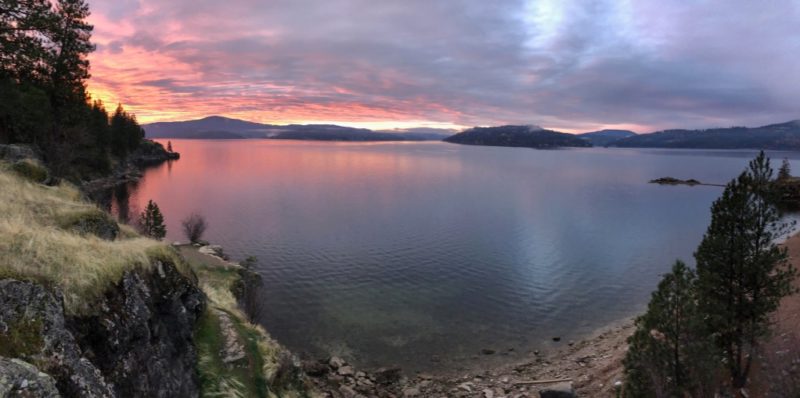
Idaho’s Panhandle, wedged between British Columbia, Washington, and Montana, is an enclave of dense forests, mighty rivers, and over 60 deep glacial lakes. The town of Coeur d’Alene, named for the American Indian tribe that has lived along the Panhandle’s waterways for millennia, sits at the head of the bewitchingly azure lake of the same name (which translates to “heart like an awl,” the French trappers’ assessment of the natives’ perceived trading shrewdness). Snaking through a glacier-dug channel between low, green-covered mountains, the lake offers fishing (there’s plenty of Chinook salmon and trout), windsurf¬ing, steamboat rides, water-skiing—essentially, if you can do it in the water, you can do it here.
It’s not all about life on the water, however; the city serves as the honeymoon capital of the Northwest. Landlubbers will find meandering bike trails and groomed hiking paths, including one through pine-scented forests up to Tubbs Hill and a great vantage point of the lake, most of whose 128-mile shoreline has been blessedly protected from development. The Lake Coeur d’Alene Scenic Byway, which follows the eastern shoreline, offers a succession of windshield-wide lake views and is just one of many lovely back roads in the area. Even the I-90 freeway, which runs east to the historic silver-mining center of Wallace, is picturesque. Keep an eye out for birds, since the area is also home to the nation’s largest population of ospreys as well as bald eagles.
Lake Winnipesaukee and the Lakes Region, New Hampshire
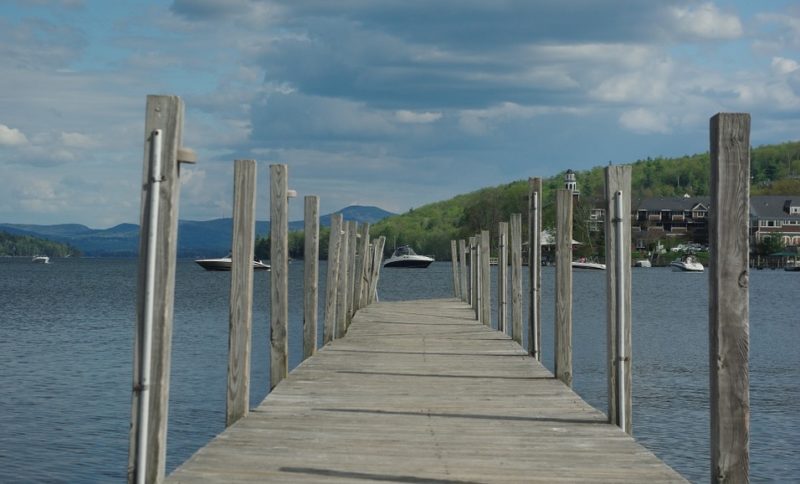
The Lakes Region has the potential to be all things to all people. Rural villages, rustic summer colonies, elaborate “cottages,” and family-friendly motels dot the shores of its 273 lakes and ponds, popular spots for swimming, boating, and fishing. At 72 square miles, Lake Winnipesaukee (“The Smile of the Great Spirit”) is the largest lake in New Hampshire. Drive around it on the very scenic 97-mile Lakes Region Tour, or explore it by boat. A popular option is the 230-foot Mount Washington, which offers cruises from Weirs Beach that will take you by hidden coves and around the many islands that dot these shimmering waters en route to various lakeside towns.
With a local croquet club and distinguished lakeside homes, the elegant village of Wolfeboro on Winnipesaukee’s eastern shore claims to be America’s oldest summer resort. Meredith is also a lovely town in a gorgeous spot between Lakes Winnipesaukee and Waukewan. Check into the historic Mill Falls at the Lake. Centered on a renovated textile mill and a former church, the waterside complex offers four inviting inns, lodges, cottages, a spa, and lots of interesting shops and small restaurants.
If Lake Winnipesaukee seems too bustling, consider quiet Squam Lake. (You might recognize it from the film On Golden Pond.) It’s a Yankee summer colony with an exclusive air, and if you haven’t inherited one of the homes on the privately owned lakefront, you can explore the lake by canoe, kayak, or a boat tour.
The Lakes Region isn’t all scenery and serenity—any popular summer destination promises a boardwalk, ice-cream parlors, and the chance to pick up a tattoo. Weirs Beach on the western shore of Winnipesaukee fills that role with a public beach, water slides, miniature golf, souvenir shops, and one of the largest video arcades in the country. Gentrified it’s not, which is precisely what keeps many families returning for its fun, Coney Island appeal.
Boundary Waters Canoe Area Wilderness, Minnesota
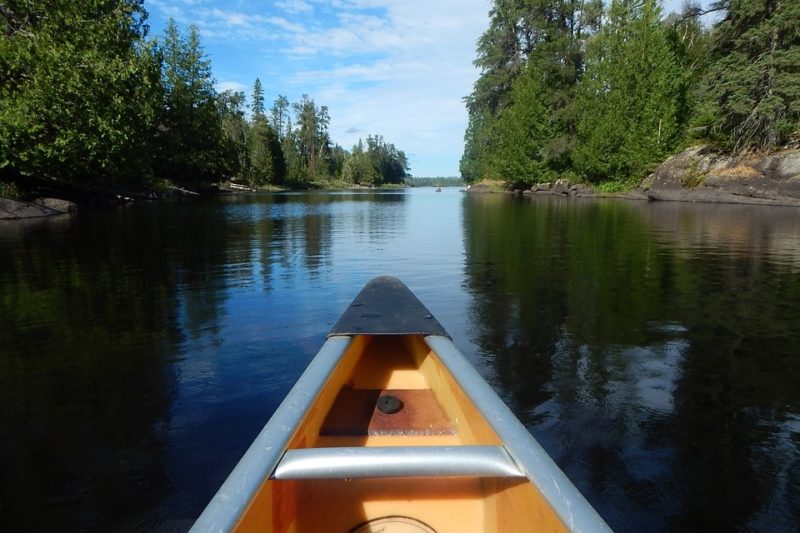
More than 1,000 lakes—ranging from 10 to 10,000 acres each—are scattered throughout the piney woods along the Minnesota/Ontario border. On the Minnesota side lie 1 million protected acres of land known as the Boundary Waters Canoe Area Wilderness, the largest U.S. wilderness preserve east of the Rockies. Ontario’s Quetico Provincial Park encompasses another contiguous 1.2 million acres. It’s an almost incomprehensibly vast lake country wilderness, with more than 1,200 miles of mapped canoe routes and not a single road. Free of cars, largely free of motorboats—even mostly free of planes in the airspace above—the BWCAW is truly a place that feels untouched by time.
For canoers, the Boundary Waters are an irresistible draw. You can paddle and portage (carry the canoe overland to the next lake) for days, weeks, even months, camping on the shores of a different lake every night, pulling fresh walleye or northern pike from its crystal clear waters for dinner. (The region’s range of fish also includes small mouth bass and lake trout.) The labyrinth of waterways was long used by the Ojibwa, then later by the French, Dutch, and British fur traders of the 17th century.
Paddlers and anglers make the Boundary Waters the most heavily used wilderness area in the nation. Nevertheless, a strict permit system and the vastness of the area quickly disperses the humanity that sometimes bottlenecks at the designated entry points; once you dissolve into the wilderness, you’ll more likely be among more moose, loons—and the occasional wolf—than humans.
The wilds of northern Minnesota are the only places in the contiguous U.S. where the eastern timber wolf was not exterminated in the 1930’s; today, more than 2,500 wolves still roam the woods here. Learn more at the International Wolf Center in Ely (pronounced EE-lee, population 3,500), filled with exhibits about wolf behavior and a variety of naturalist-run programs. Its highlight is the “ambassador pack” of four wolves (all born in captivity) that live in a 1.25-acre enclosure next to the center and can often be seen from large viewing windows. Come winter, Ely becomes dogsledding central, offering lodge-to-lodge or camping dogsled trips across frozen Boundary Waters lakes and woods.
Moosehead Lake, Maine
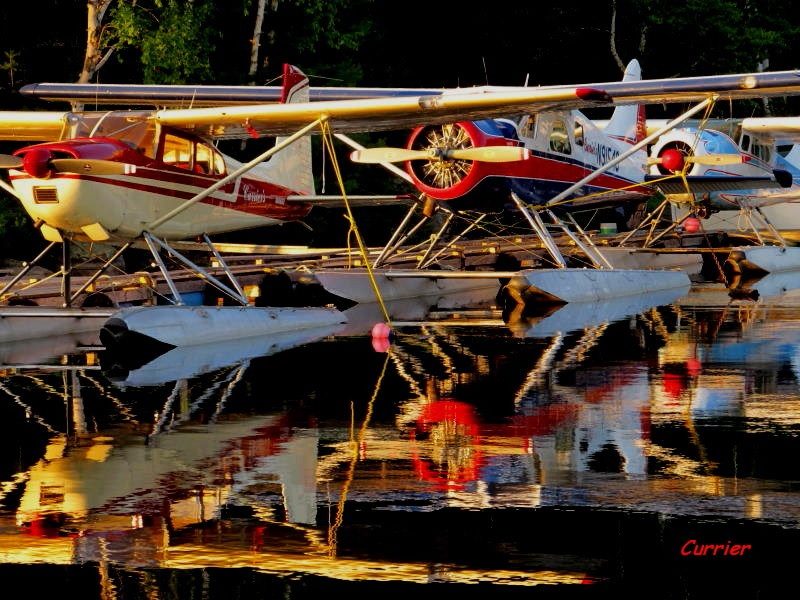
In 1853, Henry David Thoreau headed north from Boston on his second long trip into the Maine woods. Arriving at Moosehead, he wrote that it appeared “a suitably wild-looking sheet of water, sprinkled with small, low islands, which were covered with shaggy spruce and other wild wood.” In the decades that followed, the 120-square-mile lake—Maine’s largest—became a resort destination of the rich and famous, while at the same time the surrounding woods began to see the birth of a massive timber industry. It’s a duality that persists to this day, with sportsmen, vacationers, and nature lovers pursuing their muses in wild areas wedged between clear-cuts.
At the lake’s southern tip, unpretentious Greenville acts as a hub for both travelers and residents of the region’s scattered villages. From here, visitors can head into the backwoods on wildlife safaris to see some of the thousands of moose that call the area home, or step into a canoe, kayak, or motorboat to explore the lake’s 400 miles of incredible coastline and 80-plus islands. The historic steamer Katahdin, built in 1914 and serving over the years as ferry, cargo boat, and log-hauling towboat, also runs several different day cruises on the lake throughout the summer. The most interesting visit is Mount Kineo, the lake’s most striking natural landmark. Located on a peninsula at Moosehead’s midpoint, Kineo looks like a sleeping dinosaur, its eastern flank a sheer 700-foot cliff rising almost straight up from the water, its backbone a fringe of evergreens. Dock at the site of the former legendary Kineo House resort, which in its 19th-century heyday offered 300 rooms on the shore near the mountain’s base. Hardly a stick of its majestic old buildings remains, but its storybook location is still stunning and provides a dock and two trails to the mountain’s peak. A hike up is the most essential of all Moosehead experiences.
And don’t forget to check out the book!
 About the Book:
About the Book:
The world’s bestselling travel book is back in a more informative, more experiential, more budget-friendly full-color edition. A #1 New York Times bestseller, 1,000 Places reinvented the idea of travel book as both wish list and practical guide. As Newsweek wrote, it “tells you what’s beautiful, what’s fun, and what’s just unforgettable—everywhere on earth.” And now the best is better. There are 600 full-color photographs. Over 200 entirely new entries, including visits to 28 countries like Lebanon, Croatia, Estonia, and Nicaragua, that were not in the original edition. There is an emphasis on experiences: an entry covers not just Positano or Ravello, but the full 30-mile stretch along the Amalfi Coast.
Every entry from the original edition has been readdressed, rewritten, and made fuller, with more suggestions for places to stay, restaurants to visit, and festivals to check out. And throughout, the book is more budget-conscious, with starred restaurants and historic hotels such as the Ritz, but also moderately priced gems that don’t compromise on atmosphere or charm.
The world is calling. Time to answer.
Buy the Book
Amazon | B&N | Indiebound | Workman

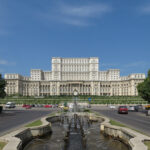

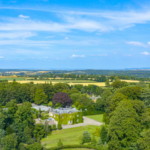
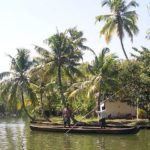
1 Comment
Jane
June 18, 2018 at 9:30 pmYou nailed it! I love those lakes, it truly makes you feel what Dirk Digger is feeling when he’s sitting there thinking what the hell did I get myself into…. everything fits perfect from the firecracker dude to the singing of Nightranger on his state of the art 70’s High-fi, Masterpiece!